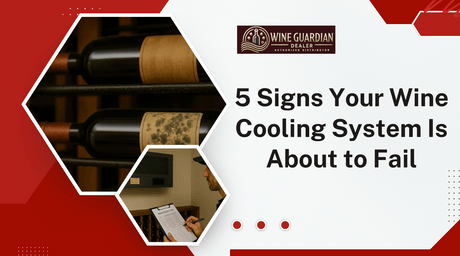
5 Signs Your Wine Cooling System Is About to Fail
Don’t wait for a costly surprise. Wine Guardian Dealer breaks down the top 5 signs your wine cooling system may be failing — and how to fix it before damage...
Jim Hopper
In Stock & Ready to Ship – Order Your Wine Cooling System Today!
Free Wine Cellar Expert Consultation | 📞 Call 1-800-260-1712
Start with a free expert consult—cooling system sizing, racking options, and no upsells.
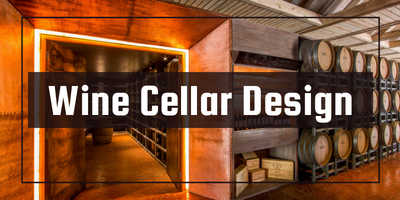
Build your dream wine cellar—without costly mistakes or guesswork.
By Jim Hopper, Wine Cooling Expert
Building a wine cellar should be an exciting project — but one wrong move in your cooling setup could cost you thousands, or worse, your entire wine collection.
Most expensive wine cellar disasters start with small, easily missed cooling mistakes.
Problems like airflow issues, vapor barrier failures, or underpowered systems lead to major consequences like mold growth, spoilage, and costly repairs.
Let’s break down the most critical — and costly — cooling mistakes, and how you can avoid them with smart planning and expert help. Start by reviewing Wine Cooling System Planning – Your Guide to a Flawless Wine Cellar to make sure your cellar is built to last.

A wine cellar cooling unit doesn’t just make the room cold.
It creates a controlled climate that maintains precise temperature and humidity — essential for aging wine properly.
When selecting a cooling unit, it’s vital to consider:
Proper installation and regular maintenance also matter. Cleaning filters, checking ducts, and tuning the system ensure optimal wine storage conditions — year after year.
✅ Explore premium cooling options at Wine Guardian Cooling Systems Collection.
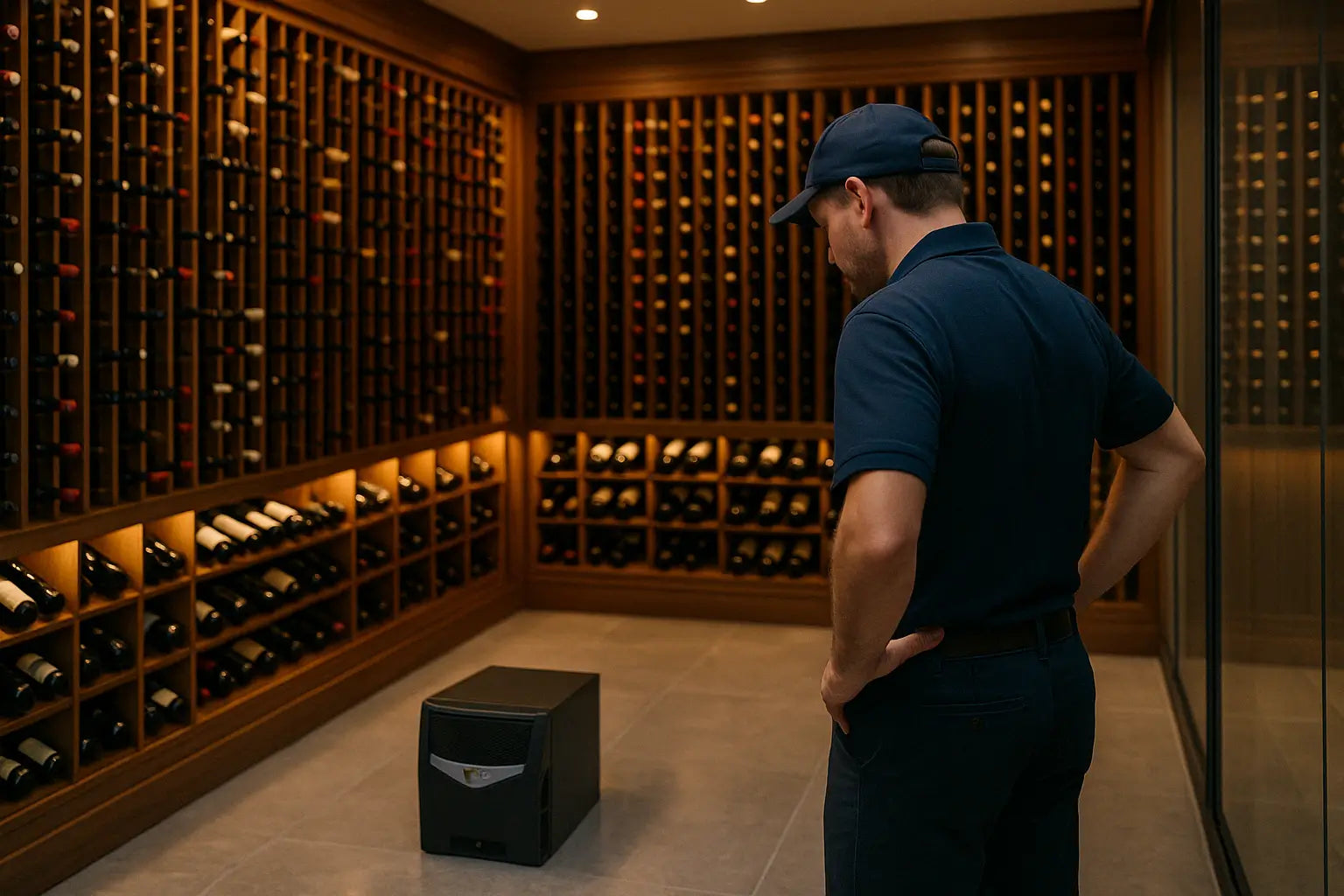
Choosing an undersized cooling system is one of the most common — and expensive — mistakes.
An underpowered unit:
Poor insulation worsens the problem, forcing the system to work harder and noisier. Even a slightly undersized unit can lead to early system failure.
"Our first contractor undersized the system. Six months later, everything had to be ripped out and replaced. Wish we had called Wine Guardian Dealer first!"
— Michael S., Napa Valley, CA
✅ Pro Tip: Always perform a full heat load calculation. Don’t guess based on room size alone. Consult pros who specialize in wine cellar cooling.
Learn more in our guide to Top Mistakes Contractors Make in Wine Cellars
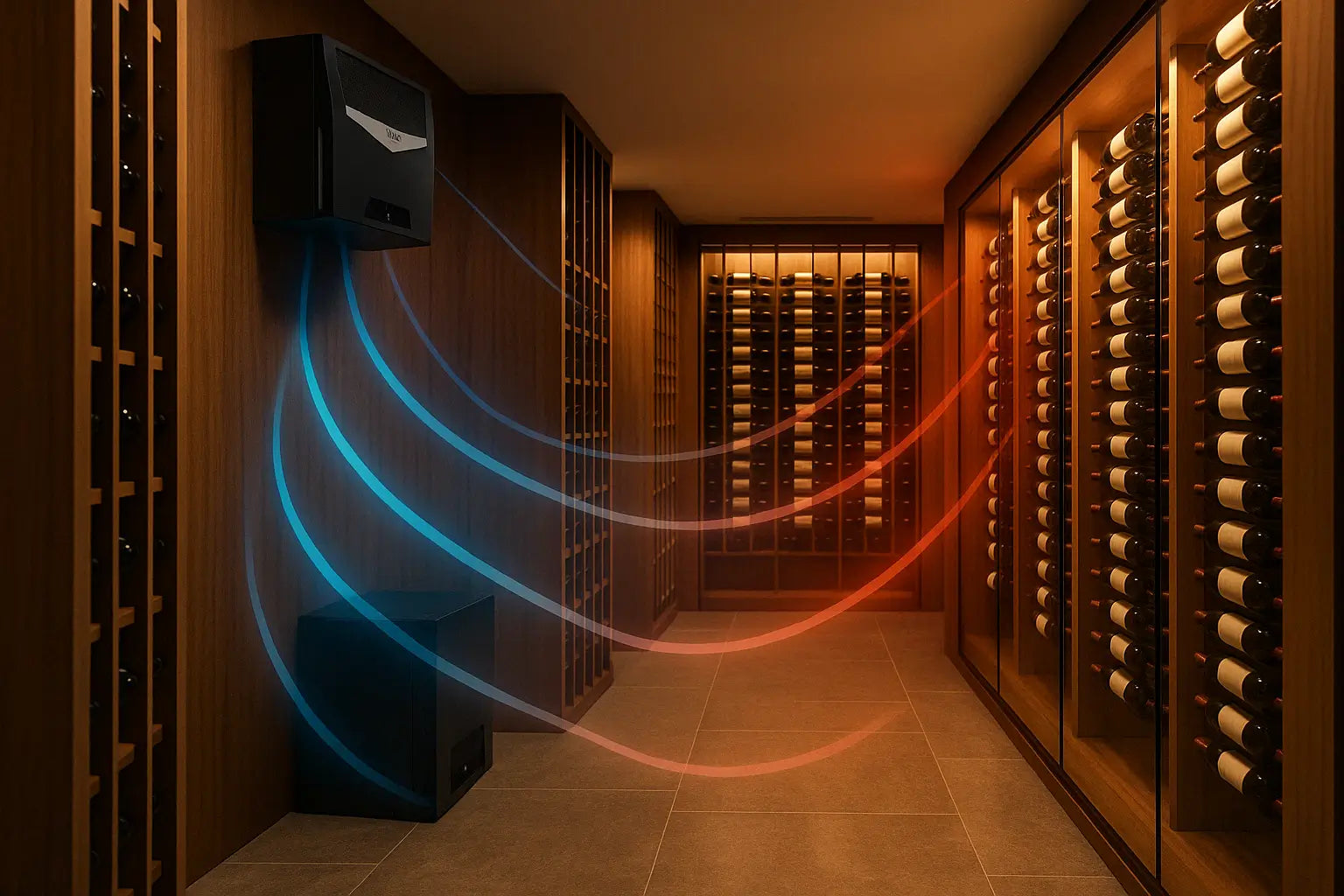
Even with the right cooling capacity, poor airflow will ruin your cellar.
Common airflow issues:
Poor airflow creates temperature imbalances, overstresses equipment, and quietly damages valuable wine.
"Thanks to expert advice, we placed vents properly and airflow has been flawless. Our cellar is perfect year-round."
— Lindsay K., Scottsdale, AZ
✅ Solution:
Design ductwork carefully. Clean fan blades and filters regularly. Keep return air vents unobstructed for balanced circulation.
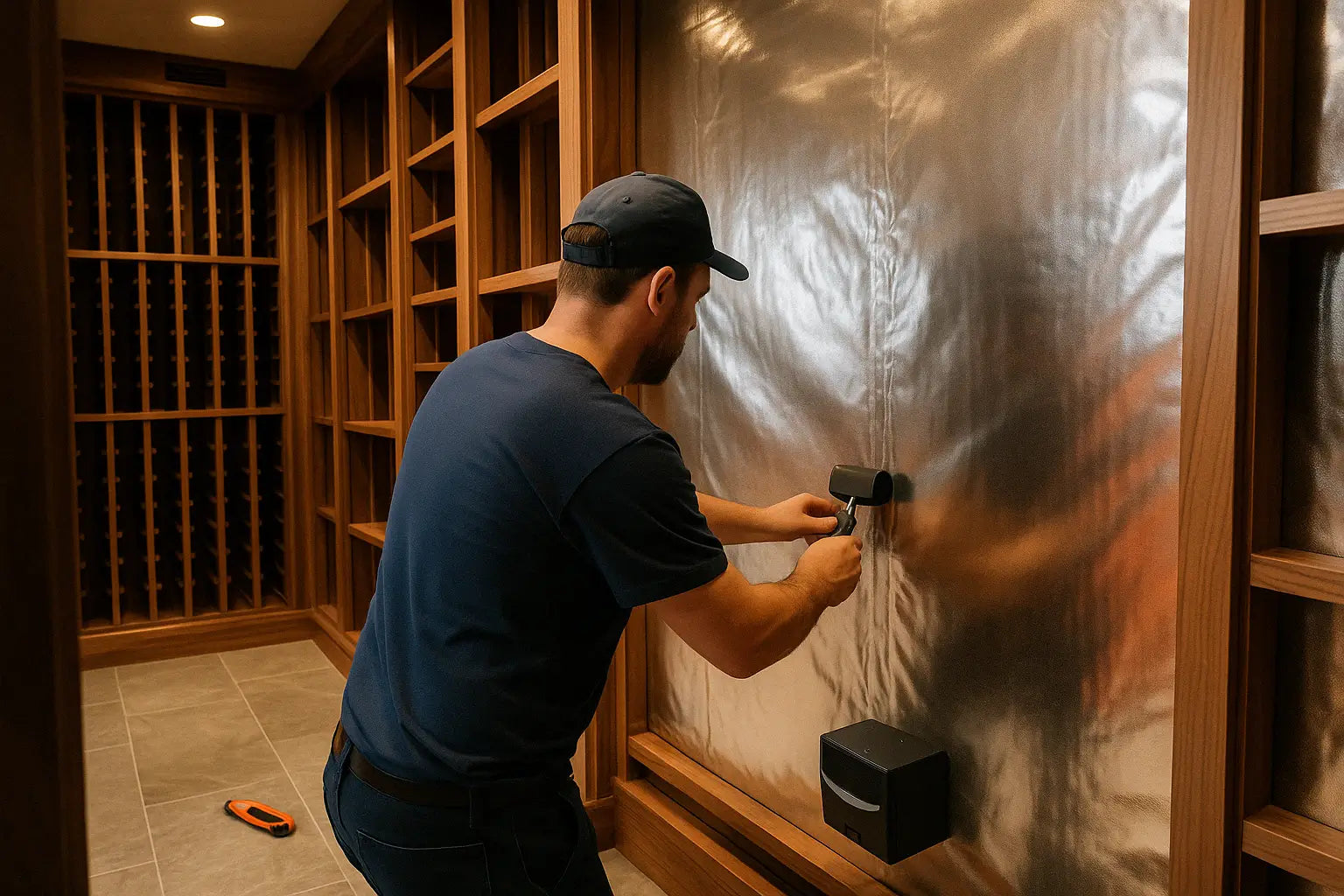
Incorrect installation is another silent killer for wine cellars.
Common mistakes:
Moisture infiltration from missing vapor barriers can lead to mold, warping racks, and overworking cooling units.
"Our original installer forgot the vapor barrier! Thanks to a second opinion, we caught it early and fixed it before disaster struck."
— Derek M., Miami, FL
✅ Tip: Always install a continuous vapor barrier on warm sides of the room and properly insulate all walls.
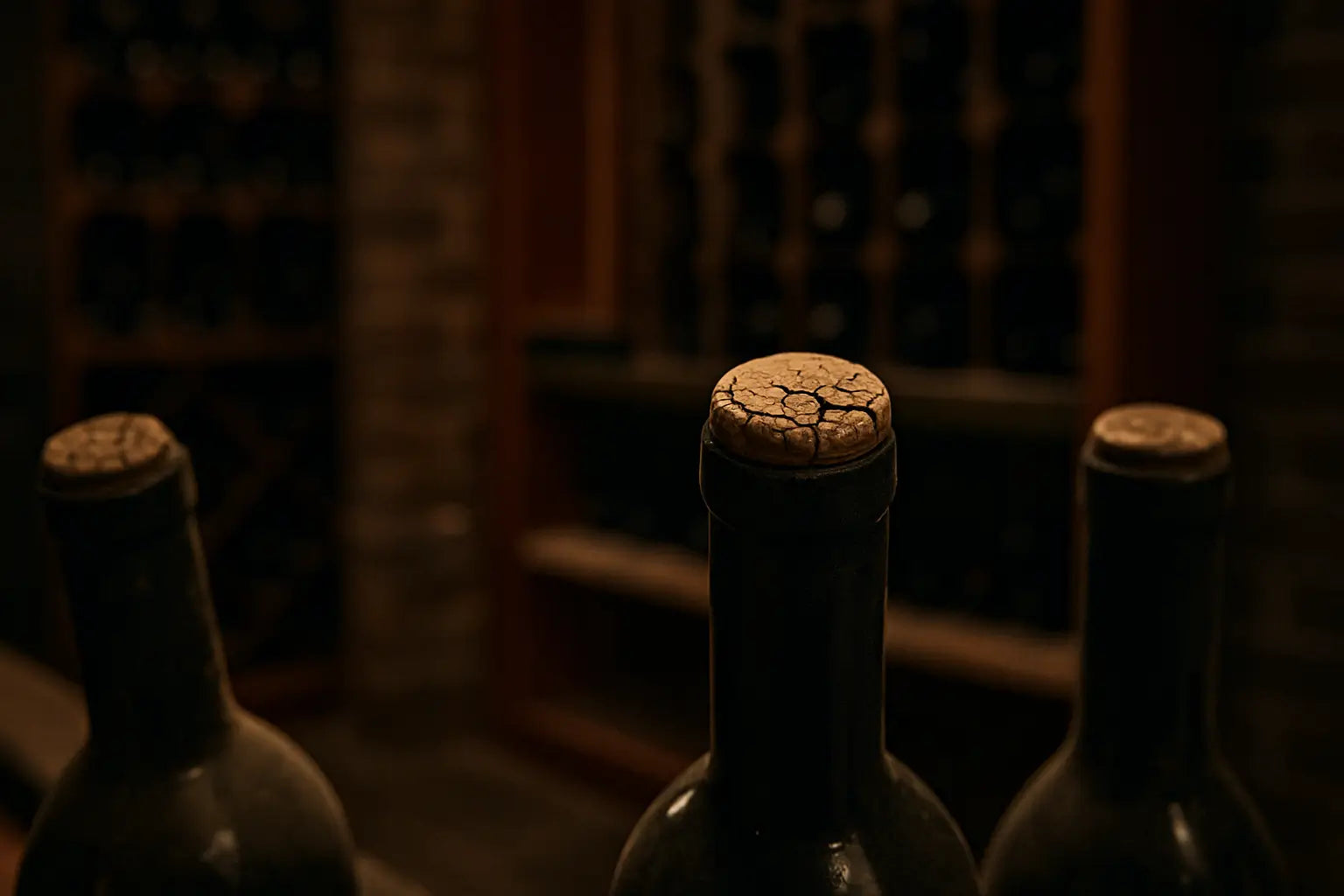
Controlling temperature alone isn’t enough.
Humidity must also be maintained between 50–70% to protect corks and labels.
Too little humidity = shrunken corks and oxidized wine.
Too much humidity = mold growth and label damage.
Improper heating or poorly installed vapor barriers can create humidity swings that quietly destroy your collection.
"Our cellar was beautiful, but without humidity control, we lost dozens of valuable bottles. Lesson learned."
— Victor L., Aspen, CO
✅ Protect your bottles with Wine Guardian Humidifiers — specifically designed for wine cellars.
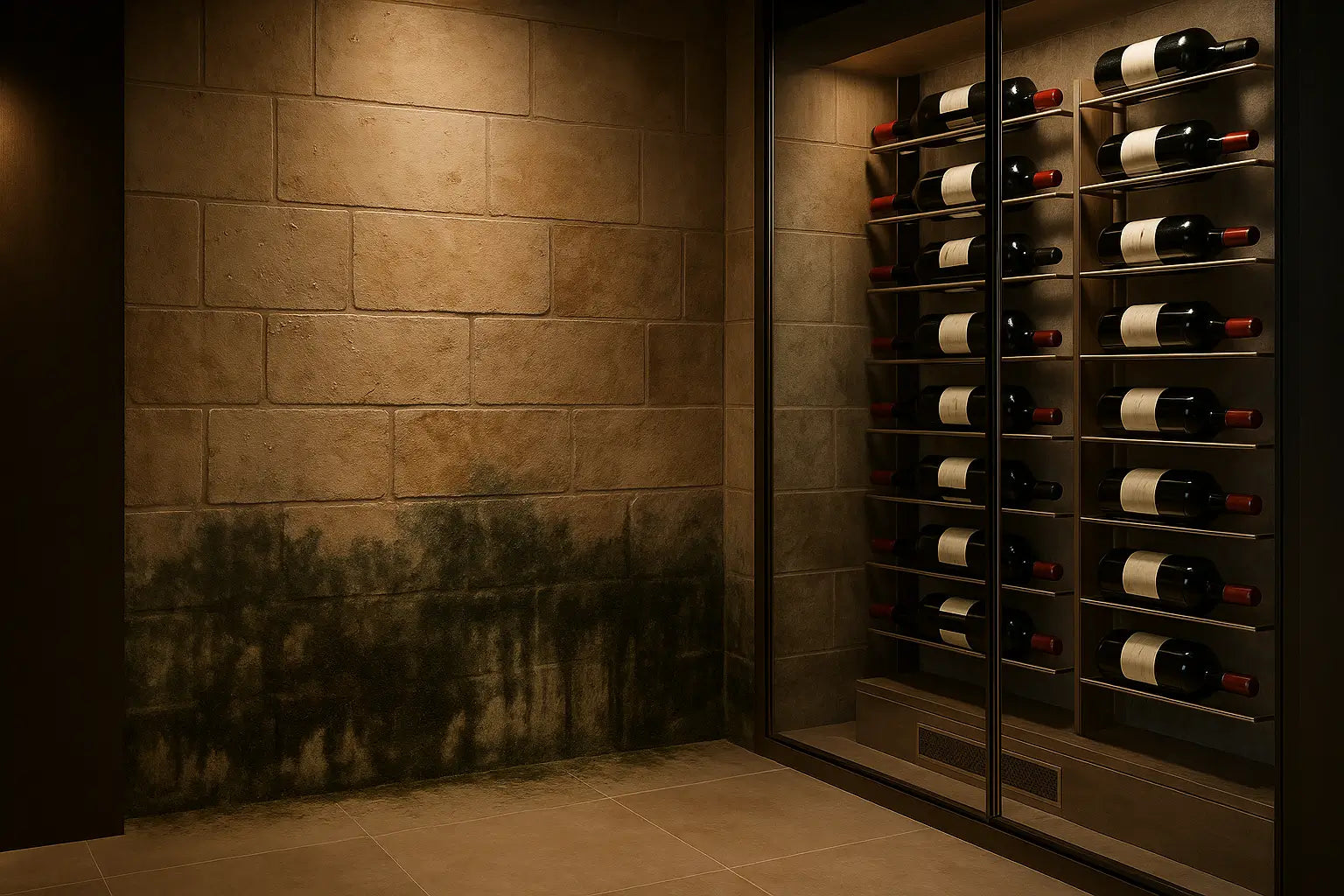
DIY wine cellars often look Instagram-worthy — but underneath, serious problems brew:
Small mistakes today can lead to major costs down the road — or worse, ruined wine collections.
"Our original plan missed a key insulation step. After consulting Wine Guardian Dealer, we corrected it before building — saved us a fortune long-term."
— Kelsey B., Beverly Hills, CA
✅ Get expert advice before you build: Schedule a Free Consultation or call 1 (800) 260-1712.
Not all cooling systems are created equal.
Trying to cool a serious wine cellar with a residential wine fridge, mini-split AC, or portable unit is a recipe for disaster.
Wine cellar cooling units are specifically engineered to:
"I originally used a residential cooling unit thinking it would work. It failed within a year. Got a real Wine Guardian system — no problems since."
— Angela M., Charleston, SC
✅ Pro Tip: Choose equipment designed for wine cellars — not wine closets or home bars.
Read more in 5 Signs Your Wine Cooling System Is About to Fail
✅ Need help picking the right cooling system? Explore all types here.
What happens when the power goes out?
Without backup systems or redundancy planning, one unexpected event can wipe out a wine investment overnight.
Serious collectors often:
"A storm knocked out our main cooling unit. Luckily, our installer had set up a backup — no bottles lost!"
— Mark R., Houston, TX
✅ Protect your cellar with backup planning — talk to us at 1 (800) 260-1712 for recommendations.
Choosing between ducted systems, split systems, or self-contained units depends on your space, insulation, and aesthetic preferences.
A properly selected unit will quietly maintain a stable 55°F (13°C) temperature with consistent humidity control.
✅ Explore Wine Guardian’s full system range.
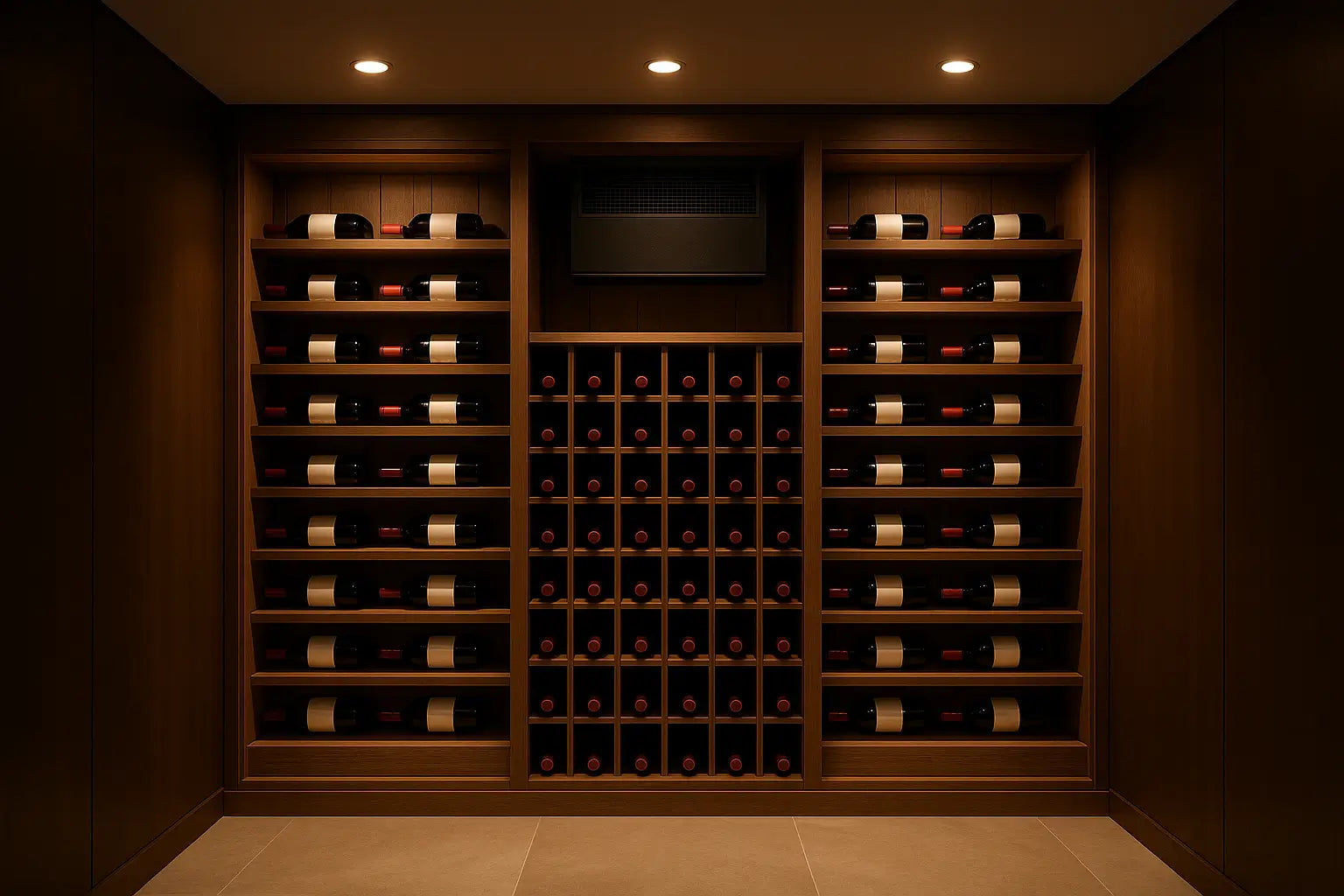
Lighting in wine cellars must be low-heat to avoid adding unnecessary load to your cooling system.
Choose LED options and install electrical circuits sized properly for the cooling equipment and humidifiers.
Avoiding these expensive cooling mistakes isn’t complicated.
It starts with the right equipment, smart planning, and trusted expert advice.
✅ Shop Wine Guardian Cooling Systems — engineered to protect your investment.
✅ Need help? Call us now at 1 (800) 260-1712 or Email at support@wineguardiandealer.com for a Free Consultation!
Sizing depends on insulation, lighting, cellar location, and design. Always have a heat load calculation done.
No. Regular ACs lower humidity too much and can destroy corks and wine quality.
Moisture infiltration leads to mold, ruined insulation, and damaged wine storage environments.
55°F (13°C) is considered optimal for most wines.
🛒Shop our most-loved Wine Guardian cooling systems today.
🛠️Protect your wine with the most trusted systems on the market.
❤️Tested, reviewed, and loved by serious collectors like you.